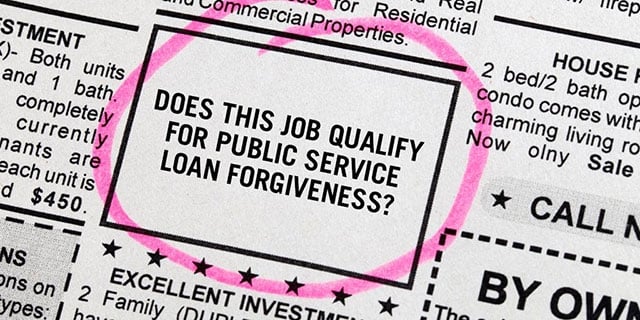You have /5 articles left.
Sign up for a free account or log in.

Department of Education
Department of Education data indicate zero borrowers are on pace to qualify for Public Service Loan Forgiveness by 2017, a prominent higher ed group warned the department in a letter last month.
Justin Draeger, president and CEO of the National Association of Student Financial Aid Administrators, wrote in the letter to Education Secretary John King Jr. and Under Secretary Ted Mitchell that the organization was concerned many more borrowers should be qualifying for loan forgiveness, but administrative issues are creating obstacles.
“If the data reveal a likely large underutilization of this public benefit, steps should be taken now to help remedy this situation before October 2017,” Draeger wrote.
The loan forgiveness program was established in 2007 to allow borrowers of federal direct student loans who make 120 monthly payments under an income-driven repayment plan while working full time for a qualifying employer in the government or nonprofit sector to have their loan balance forgiven after 10 years.
The department has not officially responded to the letter and did not comment on the questions raised by Draeger. But a spokeswoman pointed to additional data released in August showing that more than 430,000 student loan borrowers had submitted at least one employment certification form required to qualify for the loan forgiveness program. While those numbers indicate strong interest in the program among borrowers, they don’t show that students will qualify for loan forgiveness based on the required number of monthly payments. The employment certification forms are submitted by borrowers who plan to apply for loan forgiveness regardless of how many qualifying monthly payments they have made.
Jason Delisle, a policy analyst at the American Enterprise Institute, said it’s too early to be alarmed about borrowers qualifying for loan forgiveness in the first year. That’s because income-based repayment wasn’t available until 2009, he said.
“I don’t think there’s anything amiss,” he said. “There can be zero people who qualify on day one. And it can also be a program where there are lots of people who aren’t eligible today and will receive loan forgiveness in the future. I don’t think those things are mutually exclusive.”
Delisle predicted that benefits provided by the program would ramp up in the future as more student borrowers learn about it. Income-based repayment plans have also become more generous since the Public Service Loan Forgiveness program was established, he said.
NASFAA’s Draeger said he agreed that it was conceivable the program could see a trickle of qualifying student loan borrowers at first followed by a sharp uptick in qualifiers. But he said data released on the program has been opaque and it’s unclear who is on pace to qualify for loan forgiveness and who isn’t.
“It begs the question of whether there are administrative barriers getting in the way of borrowers qualifying,” he said. “That’s what we want to tackle now before we get to October or November next year.”
Draeger said the department should be helping student borrowers planning to apply for Public Service Loan Forgiveness whether they are with the right loan servicer, whether their current or former employers meet the requirements of the program and whether lump-sum payments instead of monthly payments would create issues with qualifications.
“I don’t think it takes much imagination to look into the future and see a quagmire where borrowers thought that they’d get loan forgiveness and aren’t getting it,” he said. “It’s in everybody’s interest to get this sorted out now.”




